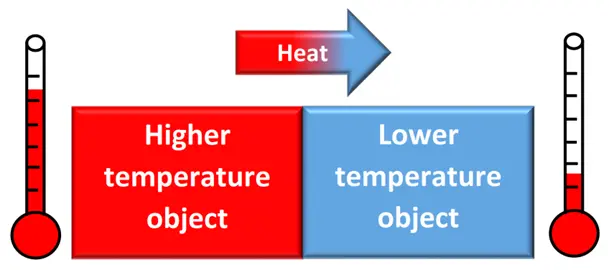Energy Transfer in Chemical Reactions: Heat vs. Temperature
Energy Transfer in Chemical Reactions
The System and the Surroundings
In every chemical reaction, energy flows between the system (the reactants and products) and the surroundings (everything else, such as the reaction container and the air).
System
The system is the specific part of the universe under study (e.g., the reactants and products involved in the reaction).
Surroundings
Surroundings are everything outside the system that interacts with it (e.g., the reaction flask, water bath, or air).
- The total energy of the universe (system + surroundings) remains constant, as dictated by the law of conservation of energy.
- However, energy can transfer between the system and surroundings in various forms, such as heat, light, or mechanical work.

Types of Systems
To understand how energy is transferred, it’s helpful to categorize systems based on their interaction with the surroundings:
- Open system: Both matter and energy can cross the system's boundaries (e.g., boiling water in an uncovered pot).
- Closed system: Only energy can cross the boundaries, not matter (e.g., a sealed reaction flask).
- Isolated system: Neither matter nor energy can cross the boundaries (e.g., an ideal thermos bottle).




